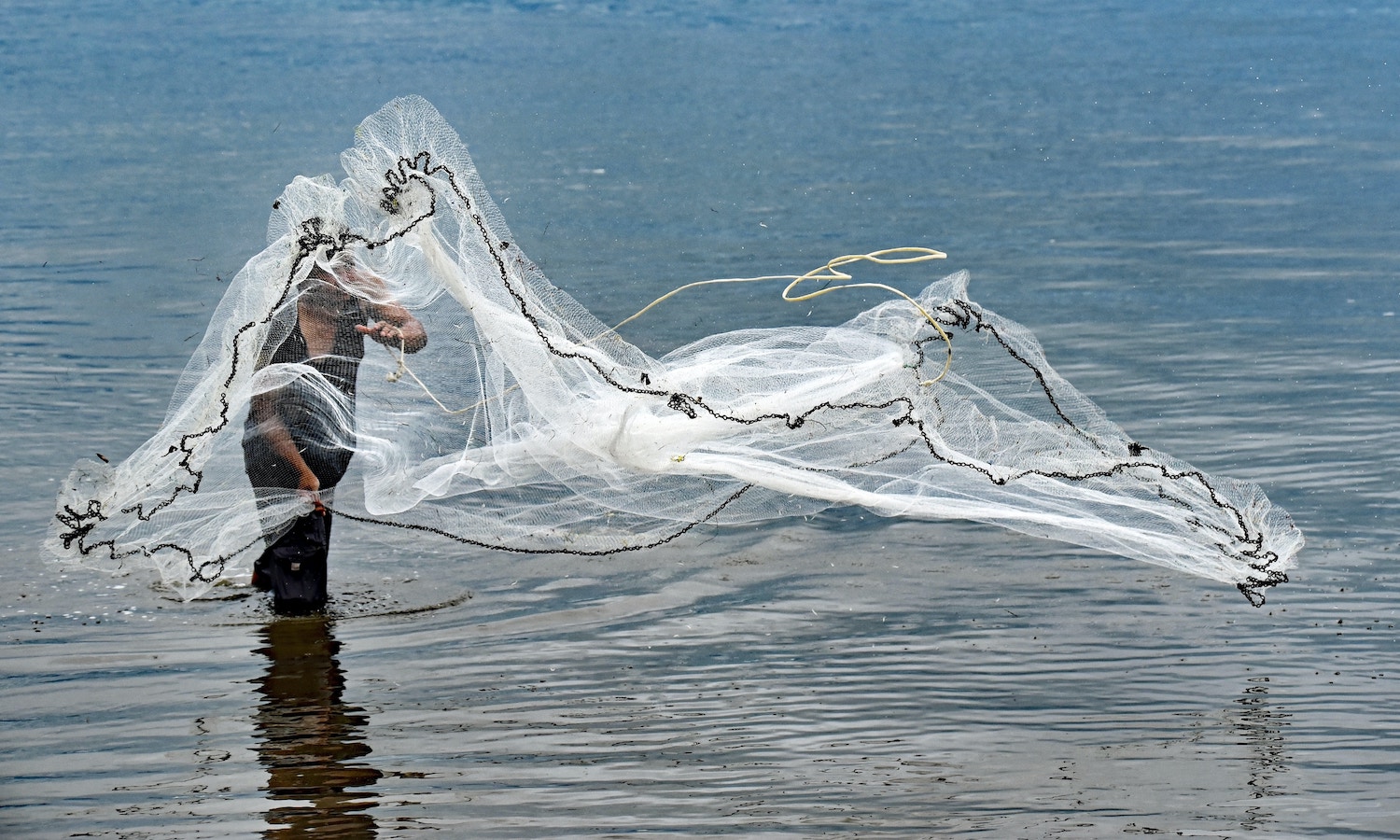A version of this piece was featured in Food Tank’s newsletter, released weekly on Thursdays. To make sure it lands straight in your inbox and to be among the first to receive it, subscribe now by clicking here.
Do you know about blue foods?
Blue foods—including fish, seafood, ocean plants, and more—are vital to the global economy, and they’re quite healthy for us, too. The livelihoods of more than 800 million people around the world depend on producing these foods, which are rich in micronutrients, including omega-3 fatty acids, iron, zinc, calcium, vitamin A, and selenium.
As part of their diets, 3 billion people worldwide rely on blue foods for protein and vital nutrients, per the U.N. Food and Agriculture Organization—yet 90 percent of production faces significant threats from the climate crisis. And it’s a sector of the food system we don’t talk about nearly enough.
I’ll admit it: Many of us in the food movement have not done a good enough job highlighting blue foods. I’ve been guilty of this, too. But blue foods absolutely need to be part of our conversations around transforming global food systems.
As chef and advocate Andrew Zimmern tells Food Tank, “We have to include our blue spaces everywhere that we’re talking about our green spaces.”
Why? Simply put, blue foods are the future.
Blue food systems hold massive potential for feeding a growing world population—and boosting economic opportunity and gender equity at the same time.
“Sea has everything to do with food justice and food access and our ability to have an equitable food system,” says Niaz Dorry, Coordinating Director at Northwest Atlantic Marine Alliance and Executive Director at National Family Farm Coalition.
Let’s crunch some numbers. Last year, global fisheries produced 178 million tonnes of aquatic animals and 36 million tonnes of algae. That’s already an all-time record, and the FAO projects that, by 2030, those numbers could grow by 15 percent. That represents a massive potential for growth in the food supply.
And when we look at who’s doing the farming, the story gets even more interesting.
1. Today, small-scale fisheries are vital to the blue food economy. Going forward, they’ll be even more important as the sector works to grow sustainably. About 90 percent of all people employed in fisheries around the world are employed by small-scale fisheries.
2. In blue foods, women are also central—and the sector must help uplift them and provide economic resources. Overall, nearly half the global blue food workforce is female. In small-scale fisheries in particular, that number is similar but slightly lower at about 4 out of every 10 people.
And a sustainable future for blue foods means we need to prioritize our water resources, too.
That means tackling the climate crisis. As I mentioned earlier, more than 90 percent of blue food production faces substantial risks from environmental change, according to a paper published this summer. Challenges include water quality, sea levels, ocean temperatures, pollution, habitat destruction, and more, and producers in Asia and the United States face the greatest threats.
This is unacceptable. Chief Caleen Sisk of the Winnemem Wintu Tribe put it really beautifully when she said: “This society, this modernization, has decided that it’s OK to dump everything and anything into waterways. Whereas the old way was that this water is precious, this water is life. You take care of this water. You don’t go throwing things in there. You pray to this water.”
The truth that Water is Life is at the heart of Food Tank’s Official World Food Day North America Celebration with the Food and Agriculture Organization of the United Nations and other partners, which I hope you’ll join on Oct. 16. You can grab a free virtual ticket HERE or join in-person in Vancouver, Canada (use promotion code: FoodTankVIP to unlock hidden in-person tickets on the registration page HERE). And as a Food Tanker, I want to give you a sneak peek of our working agenda, which is HERE.
“We have to align water protection with water production,” says Jen Bushman, Co-Founder of the nonprofit Fed By Blue. “We can do that in order to return our waters—both fresh waters and marine-based—to abundance.”
Supporting blue food producers means supporting ambitious climate action, according to the Environmental Defense Fund. It also means ensuring blue foods are included in national and international discussions and securing financing for climate-smart initiatives, particularly regarding small-scale producers and vulnerable communities.
“What I would like to see most of all is for food policy makers and policy experts to not even think twice about including blue foods in their overall strategies for our food system,” says Roz Naylor, William Wrigley Professor in Earth System Science at Stanford University and co-Chair of the Blue Food Assessment.
I’m also optimistically watching the Responsible Seafood Summit from the Global Seafood Alliance, which is taking place right now in Canada. I’m sad to miss it, but I know important work is being done.
As for you and me and all of us Food Tankers, there’s another easy thing we can do: Make sure sustainable blue foods are represented in our diets.
As the subject line of this email says:
“We owe it to ourselves—to our society—to be eating more seafood,” chef and author Barton Seaver told me on the Food Talk podcast. “We need to begin to see the human future as blue.”
Reach out to me to share your ideas for incorporating more sustainable blue foods in your diet. Maybe you’ll plan to eat more fish, or experiment with vegetation like algae or seaweed, or simply pay closer attention to sustainability and traceability in seafood. Email me at danielle@foodtank.com, and let’s brainstorm!
Articles like the one you just read are made possible through the generosity of Food Tank members. Can we please count on you to be part of our growing movement? Become a member today by clicking here.
Photo courtesy of David Clode, Unsplash













